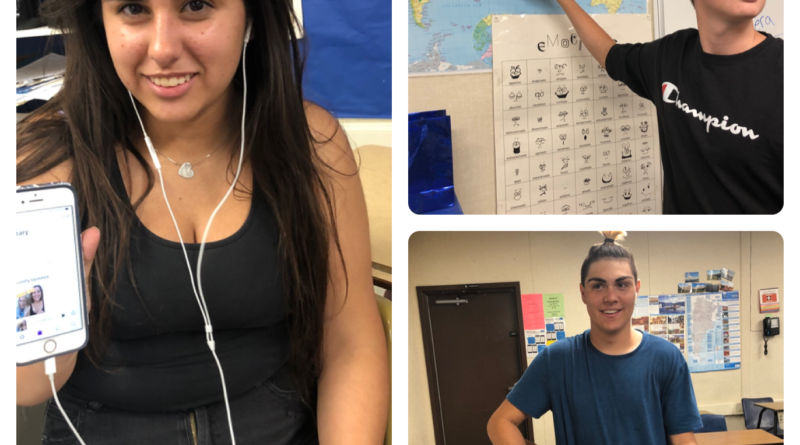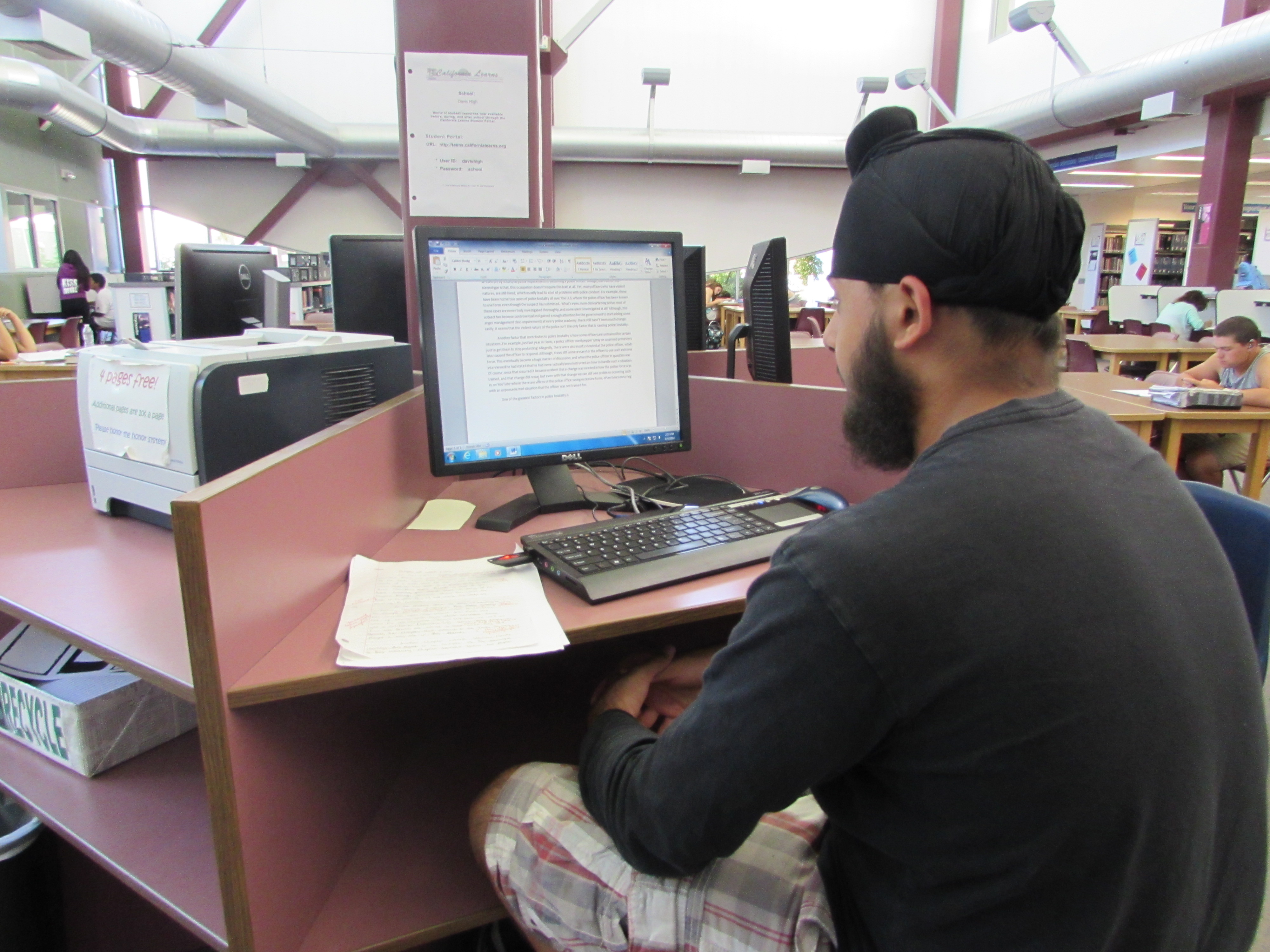Learning styles at Davis High
PHOTO: Davis High students Trey Doten, Audrey Khale and Joaquin Campbell-Holguin show off the unique ways that they learn.
By Sarah Griffiths, Anisha Dhakal and Soraya Fattahi,
BlueDevilHUB.com Staff–
Understanding your dominant learning style can allow you to tailor your personal learning experience to be more efficient.
According to a survey of 185 students at Davis High, 70.2 percent of students believe they learn better visually, 7.5 percent said they were kinesthetic learners and 22.2 percent were auditory learners.
Those that learn visually tend to rely on reading and writing to absorb information.
“I would say that when the teacher explains what we are doing while I have a diagram on a piece of paper in front of me is when I learn best,” sophomore Kavi McKinney said.
Auditory learners require listening and speaking out loud to learn information.
“I think knowing my learning type does help me in class because I can listen to lectures and I can get more out of that and focus more on what they say versus writing stuff down,” sophomore Nick Kennedy said.
Kinesthetic learning is obtained through physical activity. Art and science courses are often the most engaging classes for this type of learner.
“I learn a lot better in classrooms where I can really do the thing that we’re learning like in labs in chemistry rather than just listening to a teacher talk,” sophomore Avital Schwarz said.
World Civilization teacher Peter Haws tries his best to incorporate all learning styles in his lessons.
“I really like to have a variety in my teaching so that I can reach visual learners, auditory learners and kinesthetic learners as well as those that just learn more traditionally through reading and worksheets and things,” Haws said. “I like to have some games, some simulations, some worksheets for people who like worksheets and textbooks for those who really like to read, and I show videos too.”
Not all students at Davis High believe that teachers do enough to incorporate different styles of learning into their lesson plans.
“It depends on the class. For example, in chemistry we do hands on stuff like labs in order to help us understand the concept and application to the real world,” kinesthetic learner Xander Massie said.
“But in some classes,” Massie continued, “They don’t do enough to do incorporate learning styles, it’s usually in subjects where they’re more writing oriented and they don’t usually incorporate visual tools.”
According to the University of Massachusetts at Dartmouth, teachers can help incorporate the different types of learning by using maps and flowcharts for visual learners, asking questions and ensuring students stay engaged is beneficial for auditory learners. U
sing some type of body movement while reciting materials, whether it may be snapping, pacing, etc, are essential for kinesthetic learners.
Want to know your learning type? Take this quiz by educationplanner.org to find out!
http://www.educationplanner.org/students/self-assessments/learning-styles-quiz.shtml





